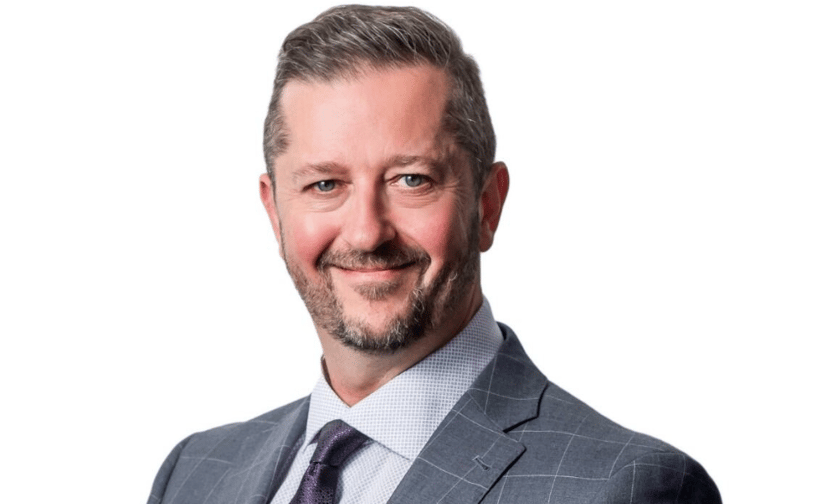

Rising construction costs and ongoing labor and material shortages are creating significant challenges for the construction industry, impacting project budgets and timelines.
Rob Beeston (pictured), vice president of Navacord’s national construction practice, is clear that adapting insurance strategies to these rising costs and inflation is crucial for construction clients. He sees it primarily as an issue of “insurance to value” and stresses the importance of clients building sufficient escalation into their budgets upfront.
“It’s really just incumbent on the clients... to make sure their budgets have enough of escalation built in,” Beeston said. “The broker's role is to ensure that the insurance policies can handle that escalation, and if not, to make necessary changes.”
This inflationary pressure is more than just a concern over project value. Beeston pointed out that while many focus solely on the total insured value, other critical factors are often overlooked. For example, many policies contain sub-limits – caps on specific types of coverage such as debris removal – that may not be sufficient as project values escalate.
“As long as your sub-limits ... are able to escalate or are set high enough at the front end, then you’ve accounted for it. If not, it's something that needs to be attended to,” he said.
The rising costs and shortages also lead to project delays, further complicating insurance coverage. Beeston highlights the often-missed impact of extended project durations due to labor shortages. A project scheduled for two years can easily stretch to two and a half, or more, creating a need for extended coverage.
“Most insurance companies have limits on the project term, that is, how long project policies can be written for,” he said, warning that this can become “exceptionally problematic” if insurance terms are not extended upfront. For larger projects, these time extensions can inflate policy costs dramatically.
Climate change is another growing risk that is reshaping the construction landscape, driving more frequent and severe natural disasters like wind and hailstorms. Insurers, reacting to these increased risks, are adjusting coverage models, often in ways that leave brokers like Beeston at odds with insurance companies.
“The insurance companies and their reinsurers are already doing a pile of modeling... setting rates, deductibles, terms, and conditions around what they think may or may not happen,” Beeston said. These changes have already begun to impact specific regions, such as southern Alberta, where insurers are either restricting coverage or increasing rates and deductibles for hail and wind damage.
Beeston expressed concern over the recent shift by some insurers to percentage-based deductibles, particularly for flood insurance, which have historically had flat deductibles imposed. Even a 5% or 10% deductible could leave clients in an unexpected position where they are self-insuring significant losses. This shift, he believes, is a reaction to catastrophic events over the past fifteen years, such as the Calgary and Fort McMurray floods. The unpredictability of these deductibles is troubling for brokers, especially when dealing with large-scale projects where a flood loss could trigger multi-million-dollar deductibles.
“A $100 million project with a 10% deductible... that’s a $10 million deductible,” Beeston said. “That’s going to cause somebody some real material impact and may also be significantly different than the deductible agreed to in the contract.”
To navigate these challenges, Beeston stressed the role of brokers in ensuring clients are prepared for the evolving insurance landscape. This means not only understanding the risks but also knowing which insurance companies are willing to take a measured approach rather than adopting extreme positions on coverage and deductibles, in some cases prematurely.
“We’ve got to be out there in the marketplace, talking to the insurance companies that are not necessarily taking that extreme approach,” he said.
Beyond traditional risk factors like inflation and climate change, Beeston also underscored the importance of using available technology to better assess risk. Brokers now have access to tools such as CAD IQ and Swiss Re mapping software for catastrophic risk events, which insurers use to model and price risks. Beeston said brokers should use these tools early in the planning stages to advise clients on project risks, particularly in flood-prone areas.
“We can provide that guidance very early on, but that’s up to us to do,” Beeston said.
As the construction insurance market moves toward a softer phase, with rates decreasing, competition is increasing, particularly in renewable energy projects. Beeston described the influx of new insurers into the renewable energy space as both an opportunity and a potential risk. While more competition is driving rates down, Beeston warned that some new entrants may lack the underwriting experience necessary to handle large-scale projects.
“Some of those carriers ... may be coming in ... to take advantage of increased writing and opportunity... those tend to be shorter-lived,” he said.
In this evolving landscape, Beeston emphasized that brokers must focus on long-term relationships with experienced insurers who can provide stability over the life of complex projects. This includes anticipating the needs of large infrastructure and energy projects, which will continue to face environmental and economic pressures. While competition may benefit clients in the short term, Beeston cautioned that long-term project success will depend on working with insurers who understand the complexities of the construction industry and can offer consistent support.
Ultimately, Beeston sees the broker’s role as an advocate for clients, ensuring that they are not caught off guard by sudden changes in insurance coverage or deductibles. The focus must remain on securing policies that will be effective when claims arise, rather than just chasing lower premiums.
“What we’re really talking about here is the efficacy of coverage and whether or not that policy is going to be there when you actually need it,” Beeston said.
